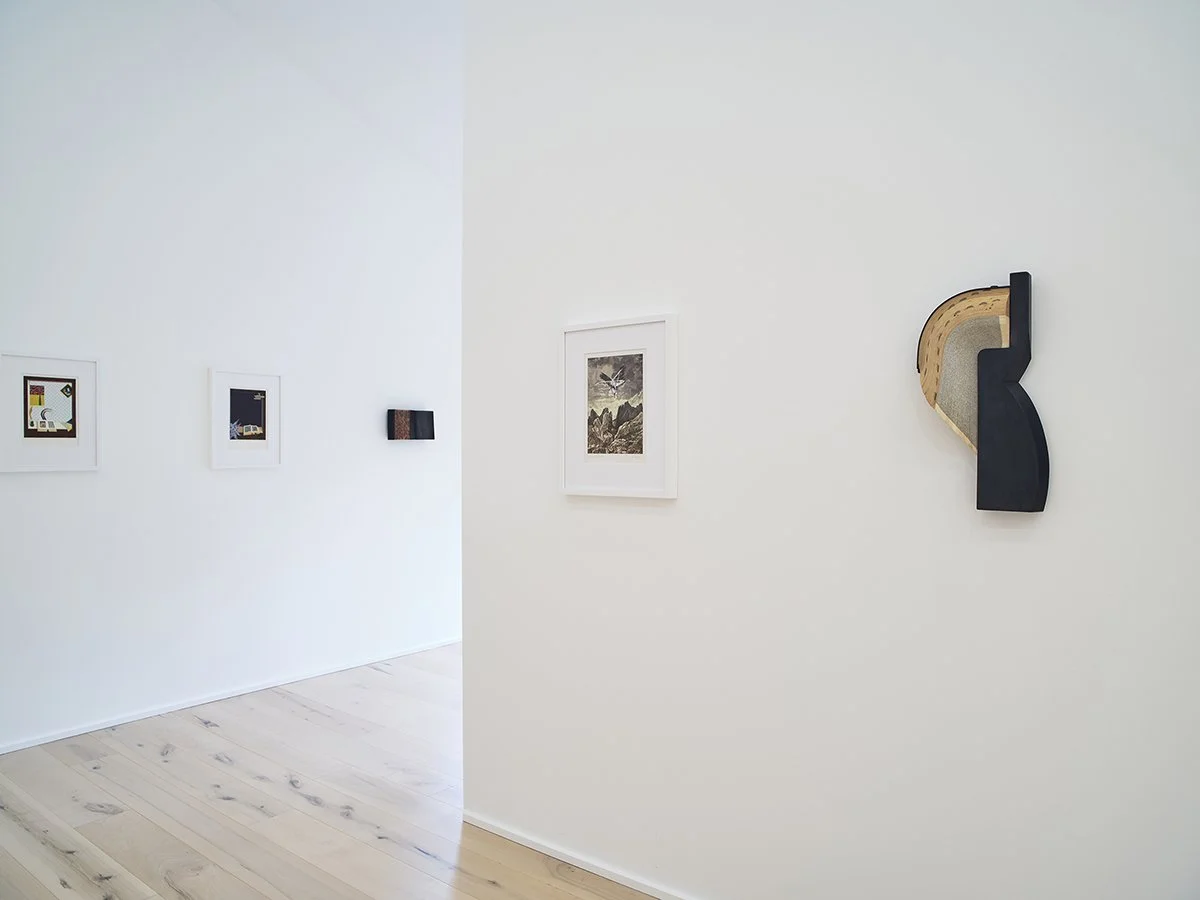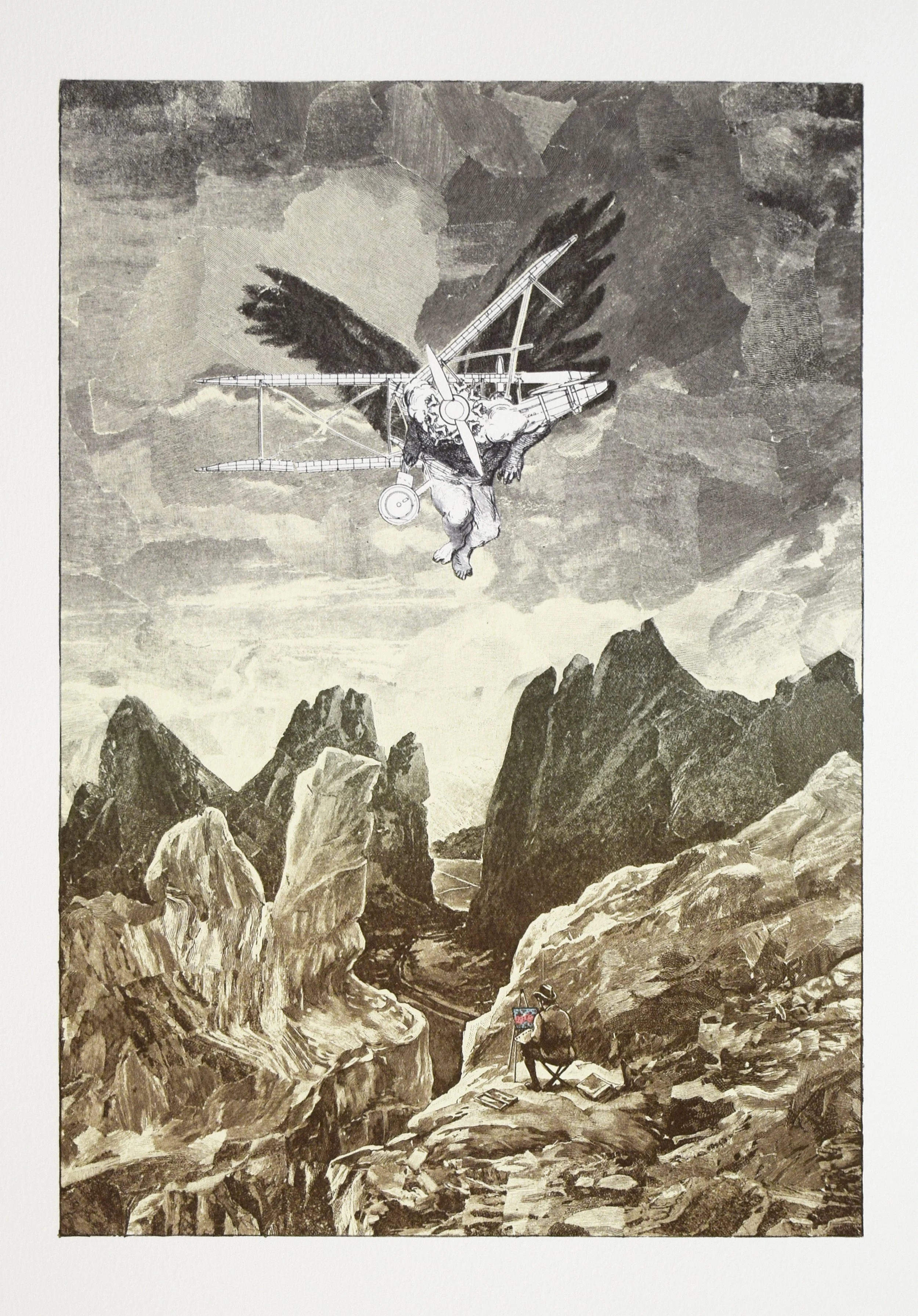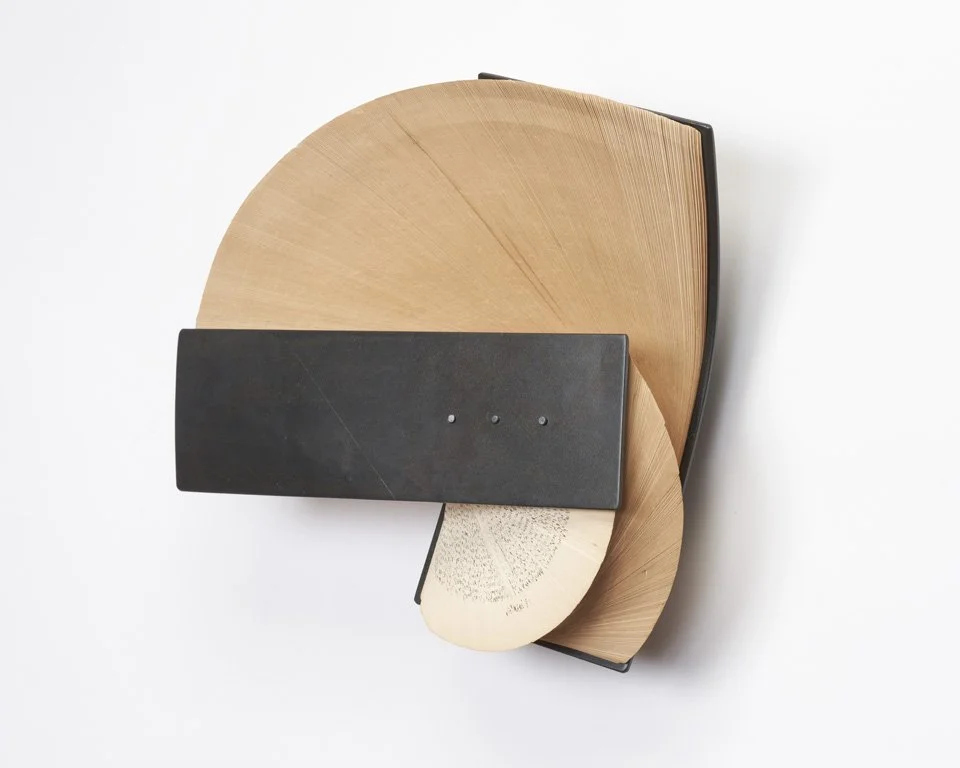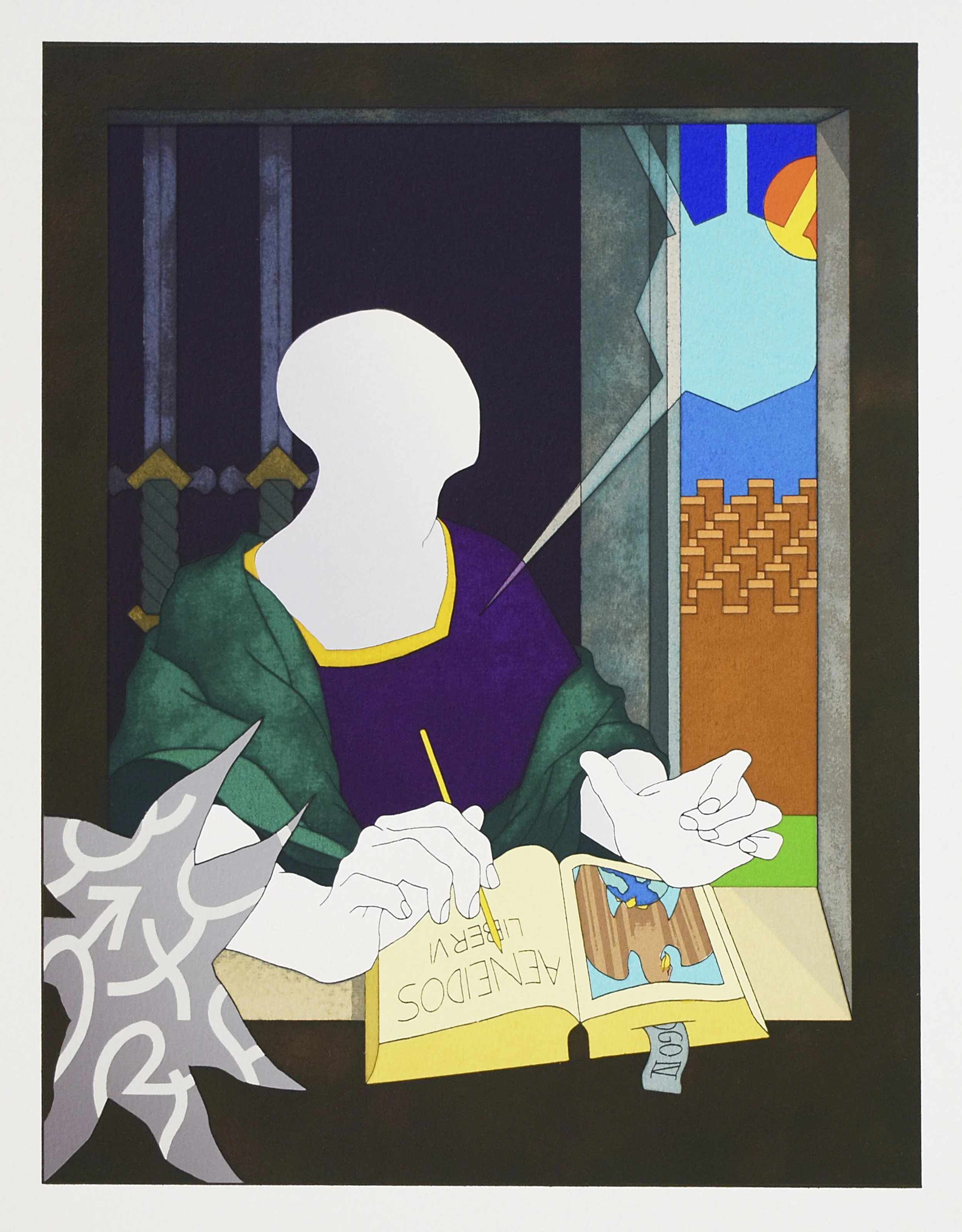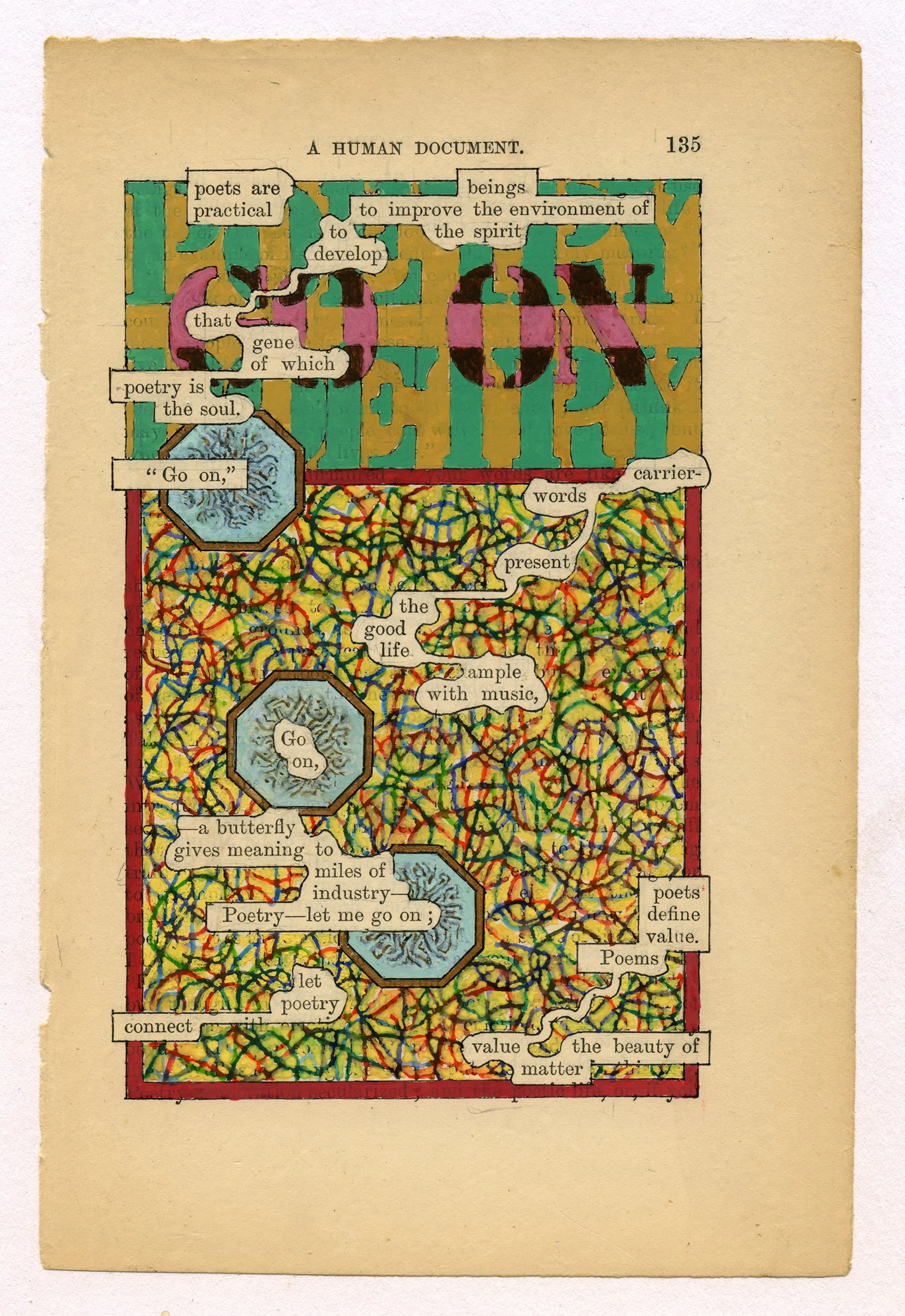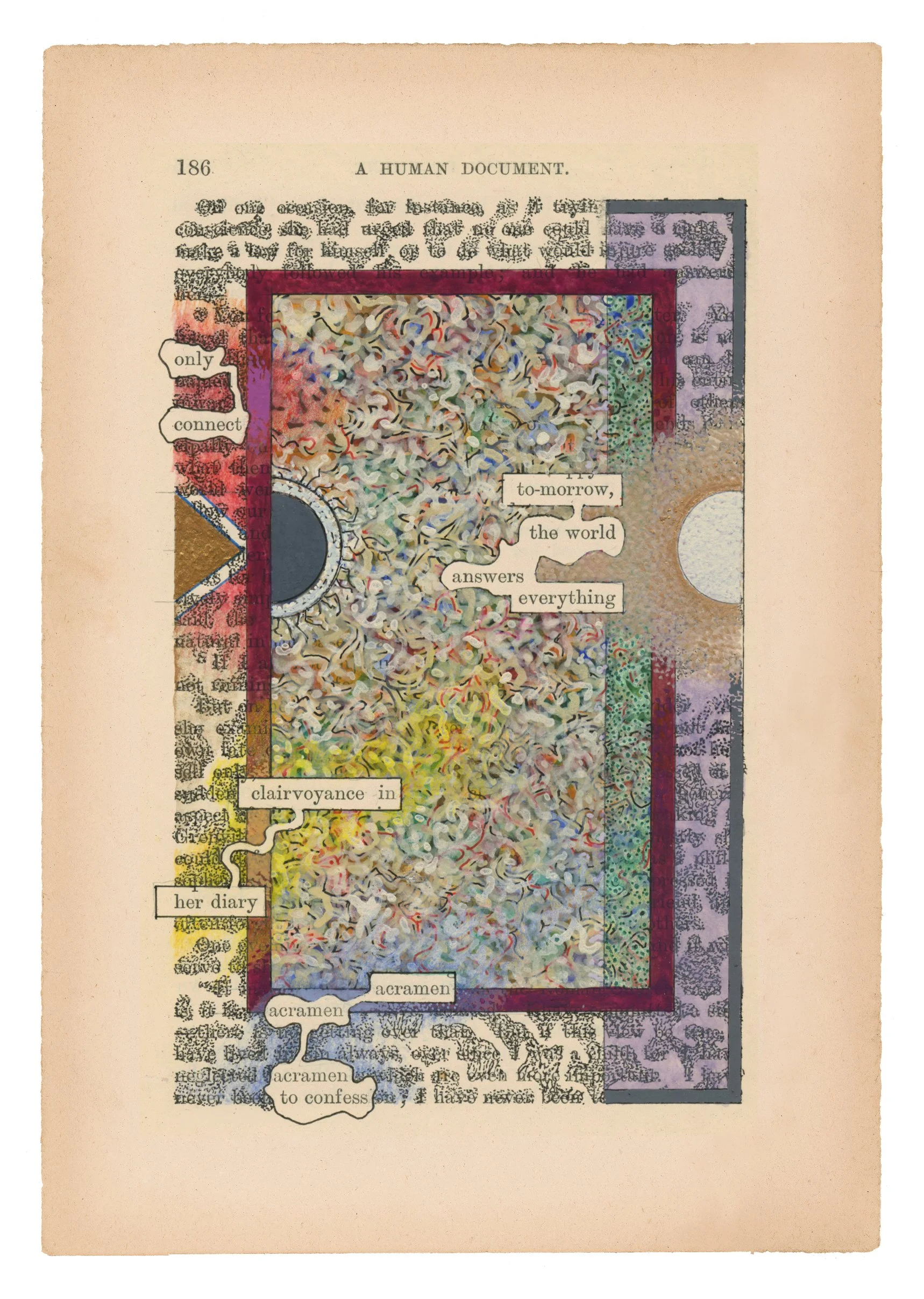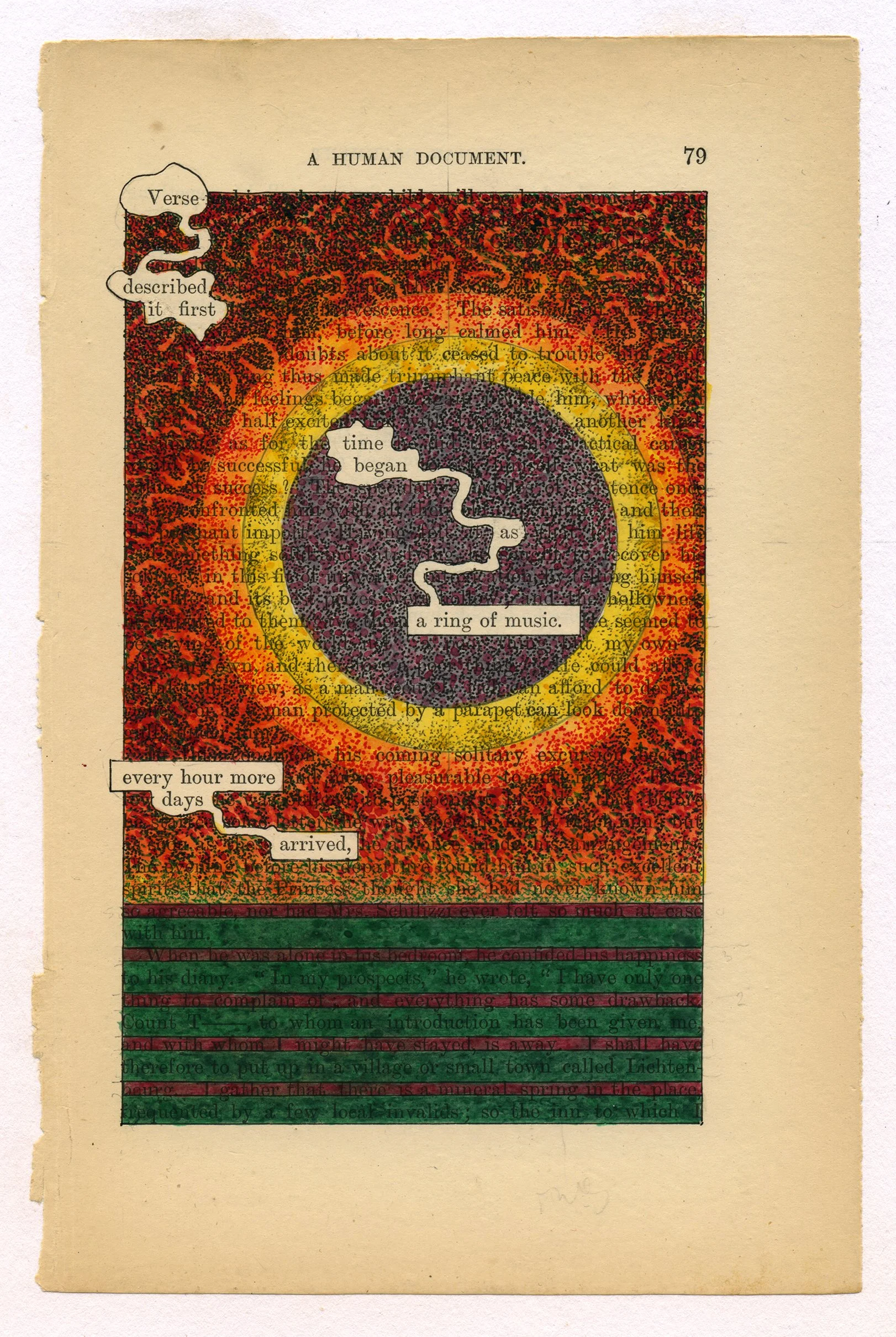CURRENT EXHIBITION
LEFT: ANDREW HAYES. Scarp. 16” x 7.5” x 3”. Fabricated steel and book paper. 2025.
RIGHT: TOM PHILLIPS. Canto XXIX/1 Flying Man. 16.5” x 12.5”. Talfourd Press Edition of Dante’s Inferno. Limited Edition Screenprint. 1983.
to-morrow, the world answers everything
ANDREW HAYES + TOM PHILLIPS
April 12th - May 18th, 2025
Open by Appointment
It is an honor to present the work of Andrew Hayes (Asheville, NC) and Tom Phillips (London, UK) in to-morrow, the world answers everything.
EXHIBITION IMAGES
Install Image
Install Image
Install Image
Install Image
Install Image
Install Image
Install Image
Install Image
Install Image
Install Image
Install Image
Install Image
Install Image
Install Image
Install Image
Install Image
Install Image
Install Image
Install Image
Install Image
Install Image
Install Image
Install Image
Install Image
Install Image
Install Image
Install Image
ARTIST STATEMENTS
ANDREW HAYES
I work with book paper and steel—two materials that hold very different meanings in our daily lives. The book represents education, growth, and escape, while steel, often invisible, forms the structural backbone of our constructed environment. Through my work with these contrasting materials, I explore their meanings and discover a harmonious interplay between their flexibility, history, mass, and density.
I begin by cutting pages from old, discarded books, detaching them from their bindings. This unbound paper invites exploration and transformation into new sculptural shapes. I employ steel to provide structure and support to the delicate forms created by the loose pages. The integration of steel—a symbol of industry and architecture—into the quiet, contemplative realm of the book excites me. As I brace the book paper with steel, the latter becomes graceful, amplifying its subtle colors and surface textures.
In this process, I rediscover the poetic possibilities of both materials. Together, book paper and steel create something new and unified—a reimagining of the book that takes on a mysterious life beyond the shelf.
TOM PHILLIPS (a note on A Humument and Dante’s Inferno)
A Humument began in 1966 when artist Tom Phillips set himself a task: to find a second-hand book for threepence and alter every page by painting, collage, and cut-up techniques to create an entirely new version. The book he found was an 1892 Victorian obscurity, A Human Document, by W.H. Mallock. Phillips transformed it into A Humument. The first version was printed by the Tetrad press in 1973, and Phillips continued to transform, revise, and develop it right up to the end of his life. The "final version" was published in 2016, but Phillips returned to the work and was underway on a new version at the time of his death in 2022.
Regarding the interpretation of Dante’s Inferno, Phillips intended that his illustrations give a visual commentary to Dante's texts. As he writes in his notebook, The range of imagery matches Dante in breath, encompassing everything from Greek mythology to the Berlin Wall, from scriptural reference to a scene in an abattoir, and from alchemical signs to lavatory graffiti. And the range of modes of expression is similarly wide, including, as it does, early calligraphy, collage, golden section drawings, maps, dragons, doctored photographs, references to other past artworks, and specially programmed computer-generated graphics.
I have tried in this present version of Dante's Inferno which I have translated and illustrated to make the book a container for the energy usually expended on large scale paintings... The artist thus tries to reveal the artist in the poet and the poet helps to uncover/release the poet in the artist.
PRESS
An art installation goes on a haunting journey, while another exhibit looks at books as art
By Jorge Arango
April 24th, 2025
Portland Press Herald
ARTWORK IMAGES
ANDREW HAYES | Inlet
TOM PHILLIPS | Flying Man
TOM PHILLIPS | A Sinner's Head
ANDREW HAYES | Pulp Discourse 25
TOM PHILLIPS | Virgil in his Study
TOM PHILLIPS | Una Selva Mesta
TOM PHILLIPS | Virgil's Study, Empty
ANDREW HAYES | Hill and Valley
ANDREW HAYES | Wodge
TOM PHILLIPS | Etna + Ida
TOM PHILLIPS | Artificial Intelligence
TOM PHILLIPS | Flame of Dis
ANDREW HAYES | Cloister
TOM PHILLIPS | A Folly for Wisdom
TOM PHILLIPS | John Cage 4'33"
ANDREW HAYES | Scarp
ANDREW HAYES | Crest
TOM PHILLIPS | Opera
TOM PHILLIPS | Corona
TOM PHILLIPS | Poets Are Practical
TOM PHILLIPS | Silence + Stars
TOM PHILLIPS | Clairvoyance
TOM PHILLIPS | Mission Accomplished
TOM PHILLIPS | Room Service
TOM PHILLIPS | Ring of Music
TOM PHILLIPS | Falling Flames
ANDREW HAYES | Coign
BIOS
ANDREW HAYES
Born in Tucson, AZ, Andrew Hayes has forged an artistic path that reflects both his dedication to craftsmanship and his innovative spirit. After studying sculpture at Northern Arizona University, Andrew transitioned from academia to the hands-on world of metal fabrication, immersing himself in the industrial welding trade. This experience provided him with a solid foundation in materials and techniques, fueling his desire to cultivate a distinctive artistic voice.
Andrew's journey took a transformative turn when he applied for the Core Fellowship at Penland School of Crafts. During this pivotal time, he delved into a diverse array of materials and techniques, with book-making becoming a significant element of his artistic exploration. His creativity flourished, leading to deeper conceptual and technical investigations.
In the fall of 2014, Andrew returned to Penland as an artist in residence, further refining his practice and continuing to experiment with book forms alongside his metalwork. In early 2018, he established his studio in Asheville, North Carolina, where he has since created a body of work that has garnered national recognition.
Andrew's sculptures have been exhibited widely, including notable solo exhibitions at Seager Gray Gallery, Hunterdon Art Museum in Clinton, NJ, and The Metals Museum, TN. His work is held in prominent collections, such as the Yale Art Museum, Black Mountain College, Wingate University, and The MFA in Houston, TX showcasing the impact of his artistic contributions within the contemporary art landscape. Through his blend of traditional craftsmanship and modern artistry, Andrew Hayes continues to inspire and captivate audiences across the nation.
TOM PHILLIPS
Tom Phillips was a true polymath. A painter, poet, and composer, Phillips has exhibited worldwide. His work is in the British Museum, the Tate, New York's Museum of Modern Art, and the Bibliotheque Nationale in Paris. His books include A Humument and an illustrated translation of Dante's Inferno. He is survived by his wife, the music critic Fiona Maddocks.
(The following is excerpted from the full bio by David Jennings.)
Tom Phillips was born in South London in 1937. Alongside his regular studies at Oxford, he attended drawing classes and lectures on Renaissance iconography. He then enrolled at the Camberwell School of Art, in the neighborhood where he lived and worked nearly all his life - taught by Frank Auerbach and, later, Charles Howard. He would go on to become an accomplished artist, musician, writer, scholar, curator, and teacher.
Phillips's first one-man exhibition was a sold-out show at the AIA Gallery in London in 1965. Four years later, he won a John Moores prize. Even so, in the late 1960s, Phillips was better known for his musical activities (both classical and with Cornelius Cardew's Scratch Orchestra), including his own compositions performed by the pianist John Tilbury.
During Phillips’ teaching career at Ipswich, Bath, and Wolverhampton art schools, he introduced Brian Eno, his best student, to the ideas that helped Eno develop ambient and generative music. Philips created concrete poetry for John Cage and developed Irma: The Score, an entire opera extracted from the pages of his most enduring work, A Humument. A new production of Irma, directed by Netia Jones, premiered at the South London Gallery in September 2017.
A Humument - the longest of Phillips’ extended serial projects - began in 1966 when he challenged himself to make art out of the first secondhand book he could find for three pence on Peckham Rye. A Humument is a radical treatment of a forgotten Victorian novel using collage, cut-up, painting, and other techniques. In 2016, on the fiftieth anniversary of its inception, Phillips completed the sixth and final version of this work – each version containing successively more pages reworked until his original piece had itself been completely transformed.
A Humument is a touchstone of Phillips's oeuvre. The Royal Academy’s 2015 Summer Exhibition dedicated a full room to it. Quotations from A Humument populate his other paintings, works of art criticism, and some of the songs he wrote when returning to music in the 1990s.
For several decades, from the mid-1970s, Phillips also received commissions for site-specific artworks and portraits. He made tapestries for Oxford, sculpture for the Imperial War Museum, street mosaics for his native Peckham, and ornament and memorials for sacred spaces, including both Westminster Cathedral and Westminster Abbey. Portrait subjects included Samuel Beckett and friends such as Iris Murdoch, Sir Harrison Birtwistle, Richard Morphet (keeper of the Tate Modern collection until 1998), and the Monty Python team. In 1989, he became the second artist to have a retrospective of portraits at the National Portrait Gallery.
Phillips received the Frances Williams Memorial Prize in 1983 for his illustration and new translation of Dante's Inferno. He also made a TV version of the Inferno with Peter Greenaway, which won them the Italia prize, jointly as directors.
Tom Phillips’ works are now in specialist collections across the world, including the Sackner Archive of Concrete and Visual Poetry (University of Iowa Library), the Palazzo Butera (Palermo), National Gallery of Australia (Canberra), National Art Library (V&A, London), and the Ashmolean Museum, with an archive of his papers in the Bodleian Library (both Oxford).
ADDITIONAL INFORMATION
TOM PHILLIPS
How We Met, by Brian Eno and Tom Phillips
A conversation between the two.
A World to See the World By
by David Jennings
Another take on Phillips’ biography.
Tom Phillips at the Royal Academy of Art
An archive of writings, images, and a video interview.
British artist-polymath Tom Phillips - portrait painter, composer and poet - has died, aged 85
The Art Newspaper
Tom Phillips discusses A Humument upon publication of the final edition.
ANDREW HAYES
A short video introduction to Andrew Hayes and his work on the occasion of his solo exhibition at Blue Spiral Gallery in Asheville, North Carolina.


